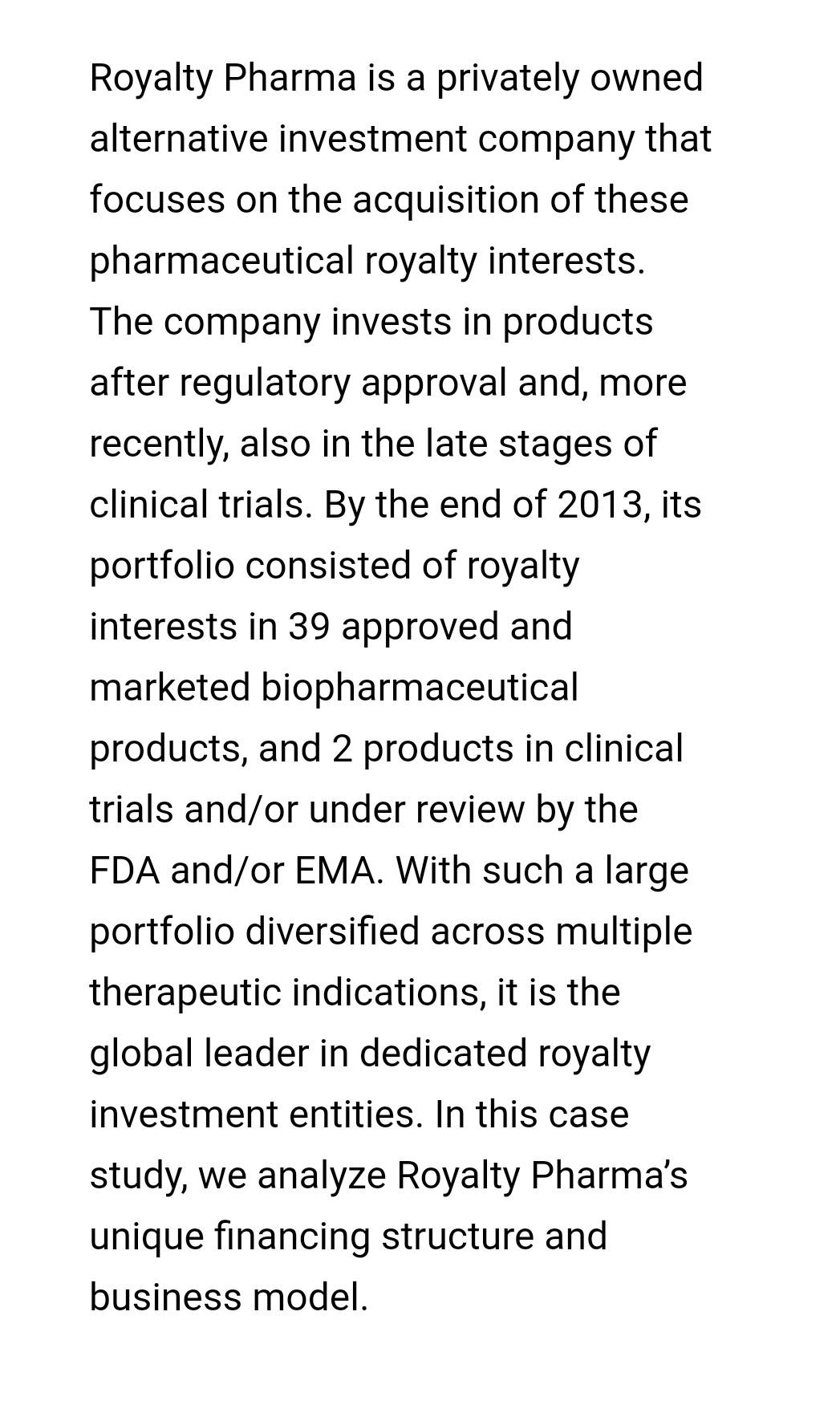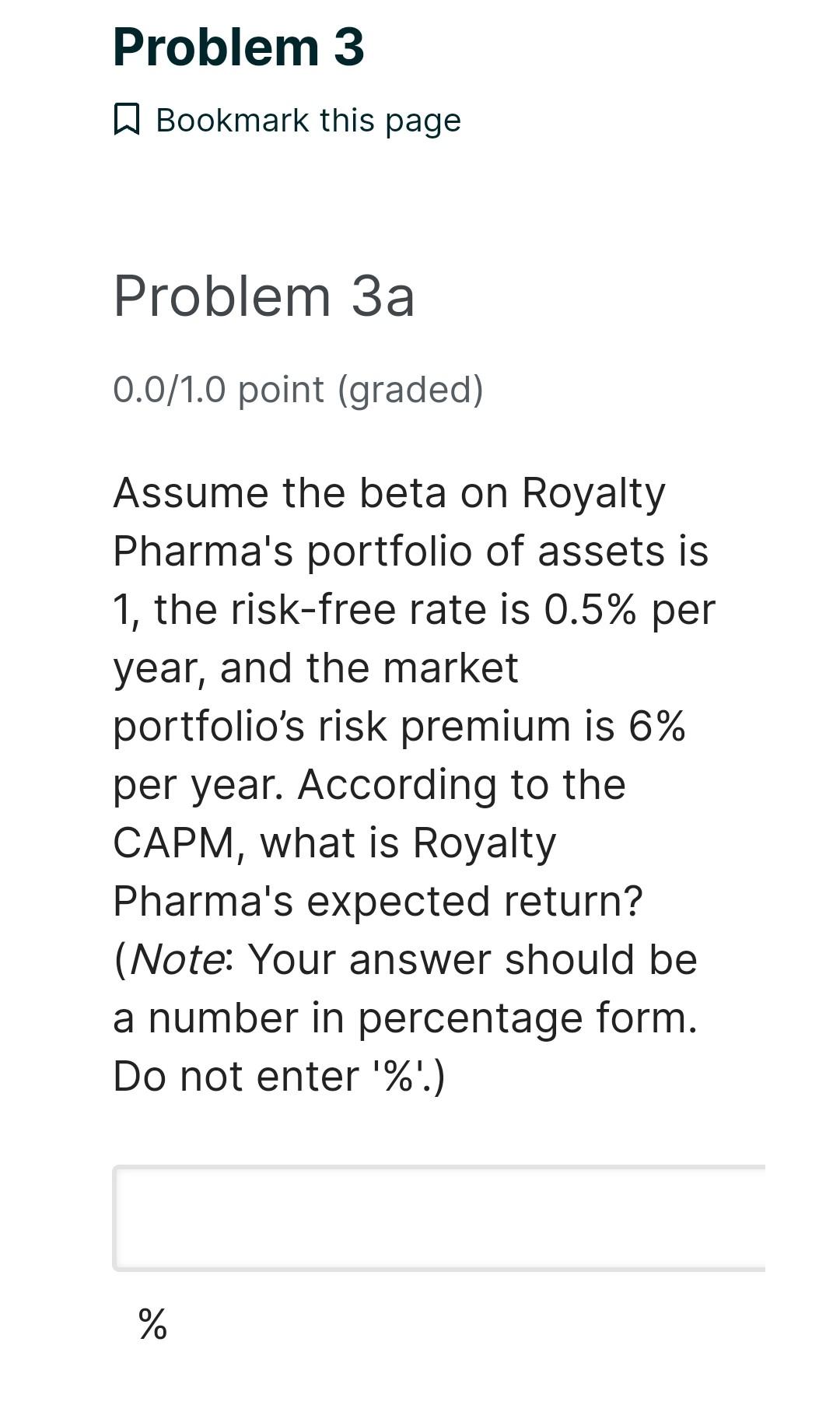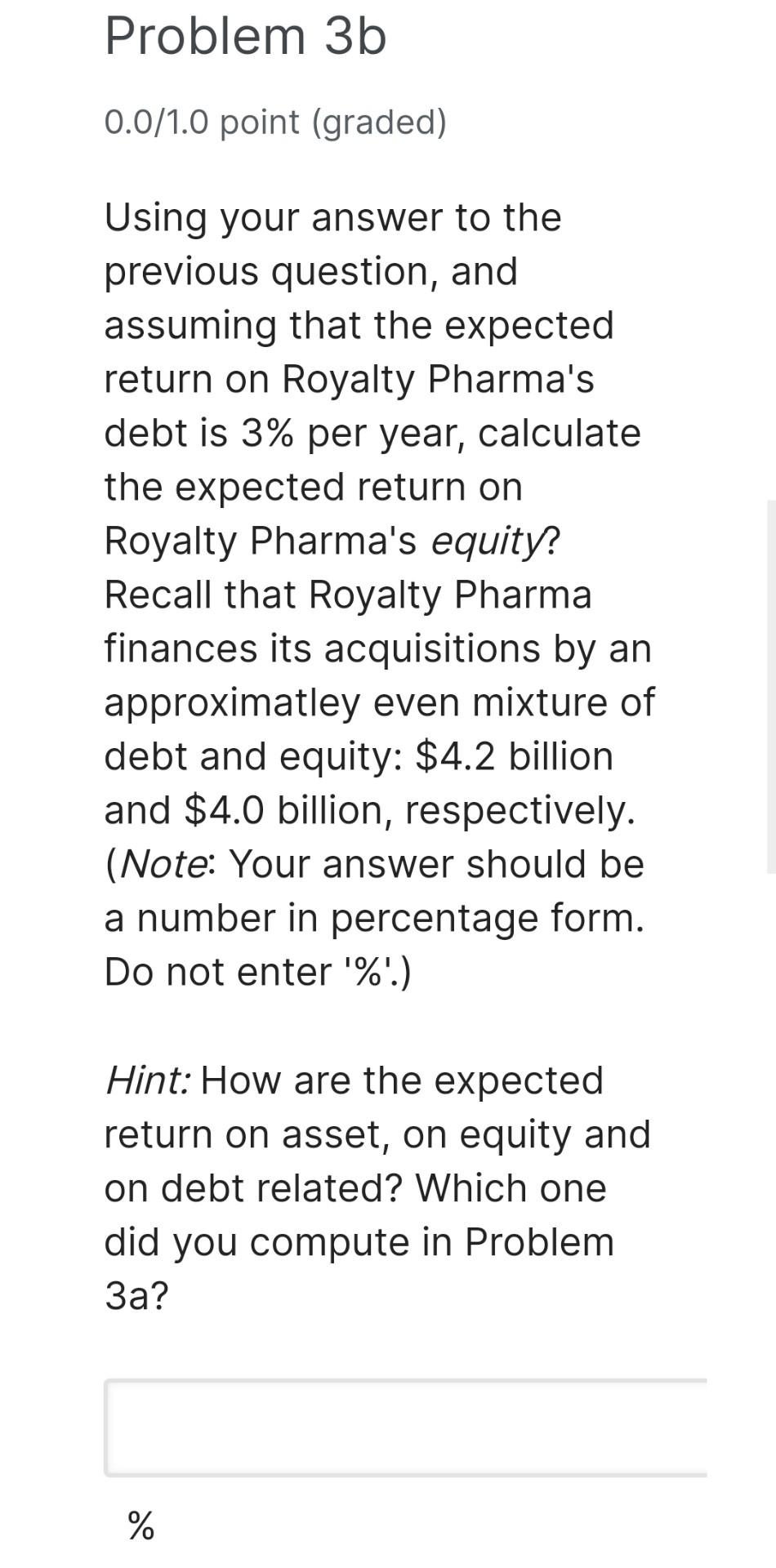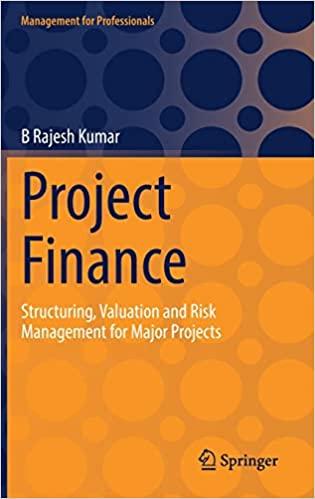Answered step by step
Verified Expert Solution
Question
1 Approved Answer
The biopharma industry is facing significant challenges to their existing business models because of expiring drug patents, declining risk tolerance of venture capitalists and other




The biopharma industry is facing significant challenges to their existing business models because of expiring drug patents, declining risk tolerance of venture capitalists and other investors, and increasing complexity in translational medicine. In response to these challenges, new alternative investment companies have emerged to bridge the biopharma funding gap by purchasing economic interests in drug royalty streams. Such purchases allow universities and biopharma companies to monetize their intellectual property, creating greater financial flexibility for them while giving investors an opportunity to participate in the life sciences industry at lower risk. Royalty Pharma is a privately owned alternative investment company that focuses on the acquisition of these pharmaceutical royalty interests. The company invests in products after regulatory approval and, more recently, also in the late stages of clinical trials. By the end of 2013, its portfolio consisted of royalty interests in 39 approved and marketed biopharmaceutical products, and 2 products in clinical trials and/or under review by the FDA and/or EMA. With such a large portfolio diversified across multiple therapeutic indications, it is the global leader in dedicated royalty investment entities. In this case study, we analyze Royalty Pharma's unique financing structure and business model. Problem 3 Bookmark this page Problem 3a 0.0/1.0 point (graded) Assume the beta on Royalty Pharma's portfolio of assets is 1, the risk-free rate is 0.5% per year, and the market portfolio's risk premium is 6% per year. According to the CAPM, what is Royalty Pharma's expected return? (Note: Your answer should be a number in percentage form. Do not enter '%'.) % Problem 3b 0.0/1.0 point (graded) Using your answer to the previous question, and assuming that the expected return on Royalty Pharma's debt is 3% per year, calculate the expected return on Royalty Pharma's equity? Recall that Royalty Pharma finances its acquisitions by an approximatley even mixture of debt and equity: $4.2 billion and $4.0 billion, respectively. (Note: Your answer should be a number in percentage form. Do not enter '%'.) Hint: How are the expected return on asset, on equity and on debt related? Which one did you compute in Problem 3a? %
Step by Step Solution
There are 3 Steps involved in it
Step: 1

Get Instant Access to Expert-Tailored Solutions
See step-by-step solutions with expert insights and AI powered tools for academic success
Step: 2

Step: 3

Ace Your Homework with AI
Get the answers you need in no time with our AI-driven, step-by-step assistance
Get Started


